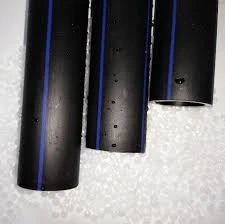دېكابىر . 13, 2024 08:03 Back to list
hdpe pipe connector
Understanding HDPE Pipe Connectors A Comprehensive Guide
High-Density Polyethylene (HDPE) pipes are a popular choice for various applications, including water distribution, sewage systems, and industrial pipelines. One of the critical components that ensure the efficient functioning of HDPE piping systems is the HDPE pipe connector. In this article, we will delve into the significance of HDPE pipe connectors, their types, benefits, installation procedures, and best practices.
What is HDPE Pipe Connector?
An HDPE pipe connector is a fitting that combines or links two or more sections of HDPE pipe. These connectors facilitate the transfer of liquids and gases, ensuring a secure and leak-proof connection. Unlike traditional pipe fittings made from metal or PVC, HDPE connectors are lightweight, corrosion-resistant, and durable, allowing for flexible applications in a variety of environments.
Types of HDPE Pipe Connectors
HDPE pipe connectors come in various types to suit different connection needs
1. Electrofusion Fittings These fittings use an electrofusion process to create a strong bond between the pipe and the fitting. By applying heat through an electric current, the surfaces of the pipes and fittings melt together, forming a robust and leak-proof joint.
2. Butt Fusion Fittings Butt fusion involves heating the ends of two pipes until they reach a molten state and then pushing them together. This method is often used for joining large diameter pipes in municipal and industrial applications.
3. Mechanical Couplings Mechanical couplings provide a non-fusion method for connecting HDPE pipes. These connectors typically include a rubber gasket that seals the joint and a mechanical device to hold the pipes together, making them easier to install and remove if necessary.
4. Flanged Connections Flanged connectors are used when high-pressure applications require a secure mechanical joint. These fittings have raised edges (or flanges) and are bolted together, creating a robust connection.
Benefits of HDPE Pipe Connectors
1. Durability HDPE pipe connectors are resistant to corrosion, abrasion, and chemicals, making them suitable for harsh environments. They are less likely to degrade over time compared to metal connectors.
2. Flexibility The flexibility of HDPE allows the piping system to adapt to ground movements without breaking, reducing the risk of leaks.
3. Lightweight Compared to traditional materials, HDPE connectors are lighter, which aids in easier transportation and installation.
4. Low Maintenance HDPE connectors do not require extensive maintenance, reducing the long-term costs associated with pipe joint integrity.
hdpe pipe connector

5. Leak-Free Seal When properly installed, HDPE connectors provide a leak-proof seal, ensuring efficient fluid transport without environmental contamination.
Installation Procedures
The installation process of HDPE pipe connectors varies depending on the type but generally includes the following steps
1. Preparation Ensure that the pipes are cut cleanly and are free from dirt and debris. Use a pipe cutter or saw for a clean, square cut.
2. Alignment Align the pipes carefully to ensure the connector fits properly without any tension or misalignment.
3. Heating (for fusion connectors) For electrofusion and butt fusion fittings, heat the ends of the pipes and the inside of the fitting to the prescribed temperature.
4. Joining For electrofusion, activate the machine to begin the fusion process. For butt fusion, push the heated ends together firmly until they cool to form a bond.
5. Cooling Allow sufficient time for the joint to cool and set, following manufacturer guidelines to ensure optimal joint strength.
Best Practices
1. Follow Manufacturer Instructions Always adhere to the guidelines provided by the manufacturer to ensure proper installation and joint integrity.
2. Use Qualified Personnel Employ trained professionals for the installation of HDPE pipe connectors, especially when using fusion methods.
3. Perform Regular Inspections Schedule periodic inspections of the piping system to identify and address any potential issues early on.
4. Consider Environmental Factors Assess the environment where the piping system is installed to choose the most suitable connectors and installation method.
Conclusion
HDPE pipe connectors play a vital role in the functionality and longevity of HDPE piping systems. Their various types offer flexibility for different applications while providing numerous benefits, including durability, cost-effectiveness, and a leak-free seal. Understanding the installation process and best practices ensures that these connectors perform optimally in challenging environments. As the demand for sustainable and efficient piping solutions continues to grow, HDPE pipe connectors remain a top choice for engineers and contractors worldwide.
-
High-Quality PPR Pipes and Fittings Durable ERA PPR & PVC PPR Solutions
NewsJul.08,2025
-
Black HDPE Cutting Board - Durable, Non-Porous & Food Safe HDPE Plastic Cutting Board
NewsJul.08,2025
-
High-Quality CPVC Panel Durable HDPE & PVC Panels Supplier
NewsJul.08,2025
-
Double PE Welding Rod Supplier - High Strength, Durable & Versatile Welding Solutions
NewsJul.07,2025
-
High-Quality PVC-O Pipe Supplier Durable 75mm PVC Pipe & Connections Leading PVC Pipe Company
NewsJul.07,2025
-
HDPE Drainage Pipe Supplier – Durable & Corrosion-Resistant Solutions
NewsJul.06,2025

